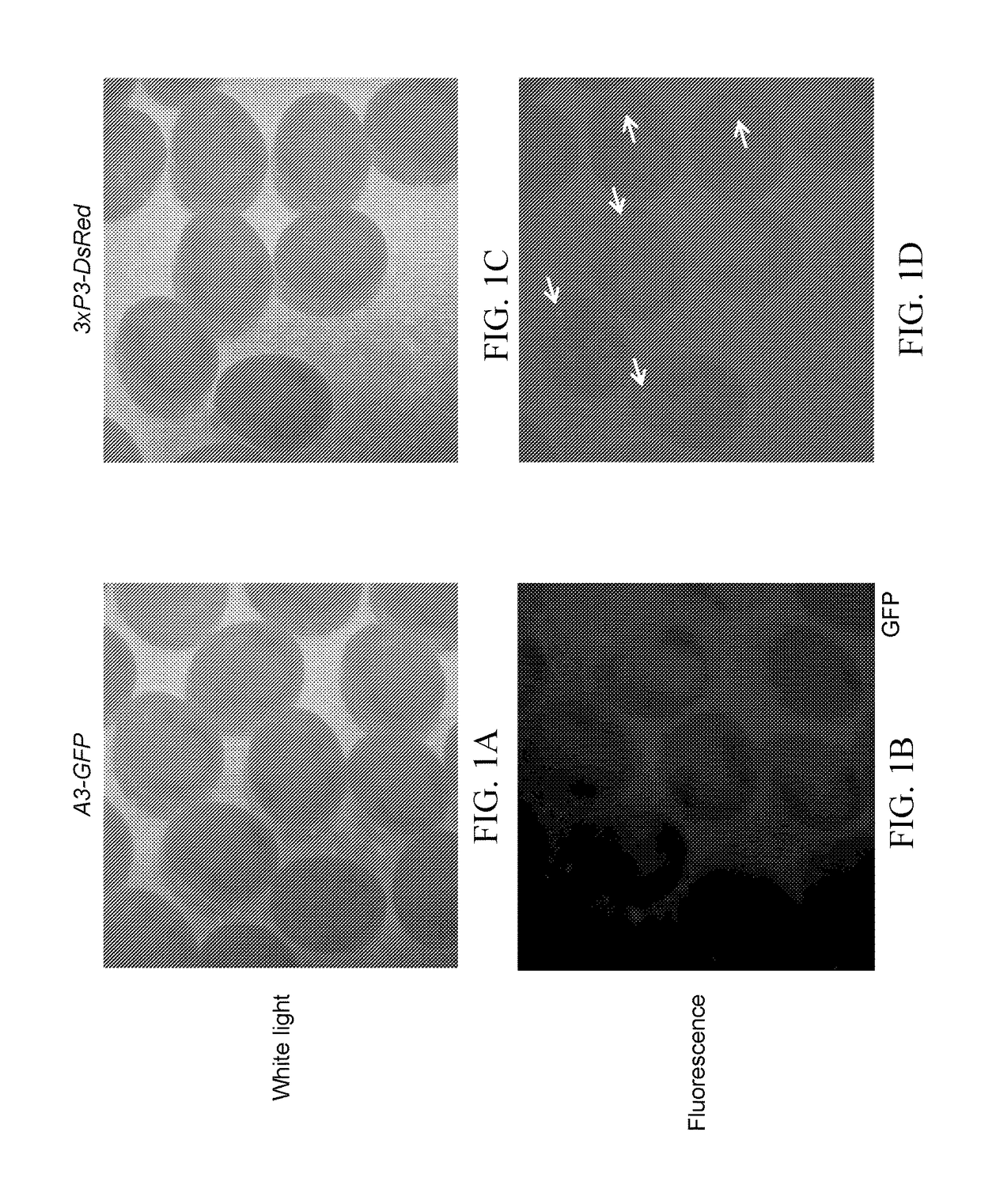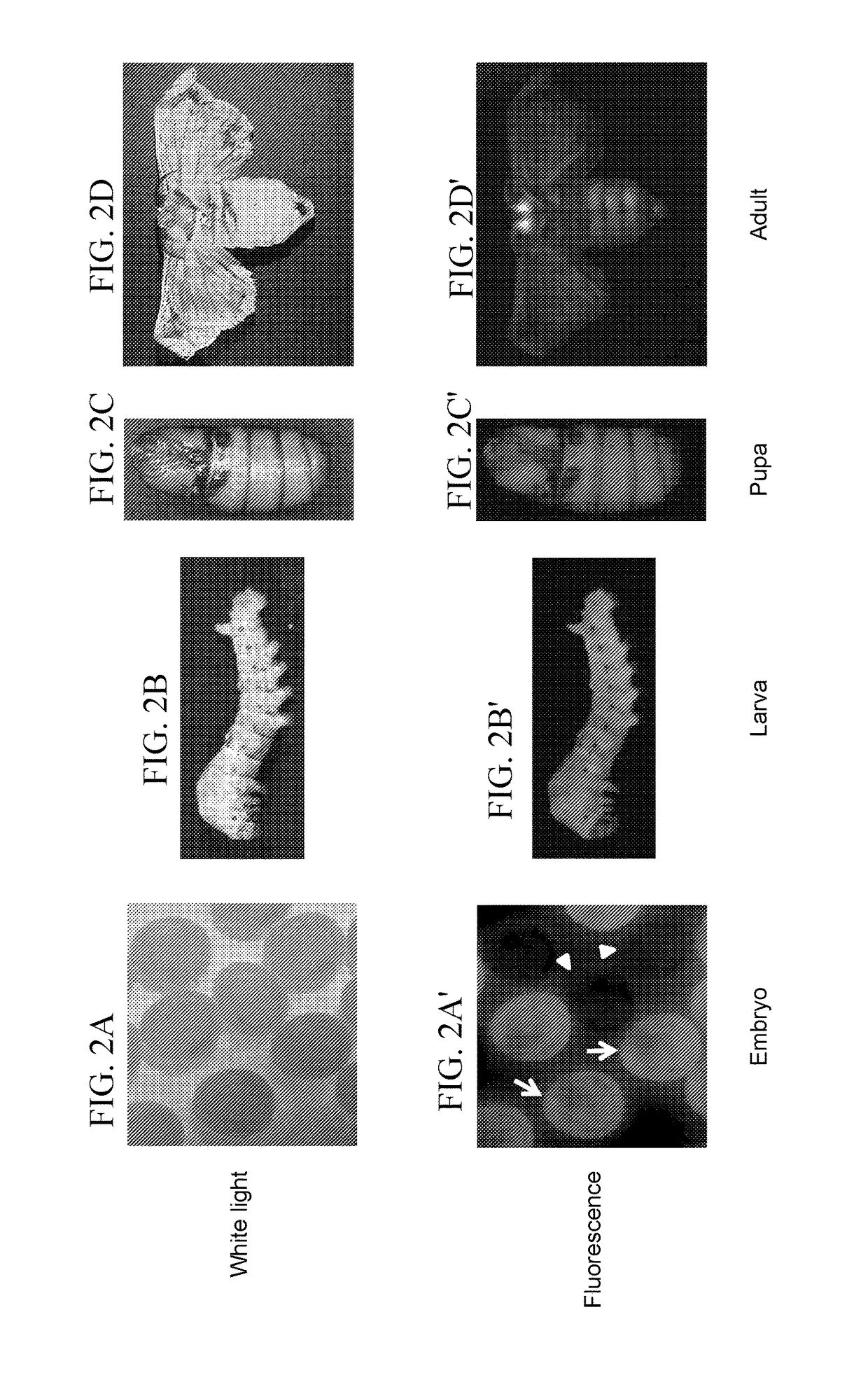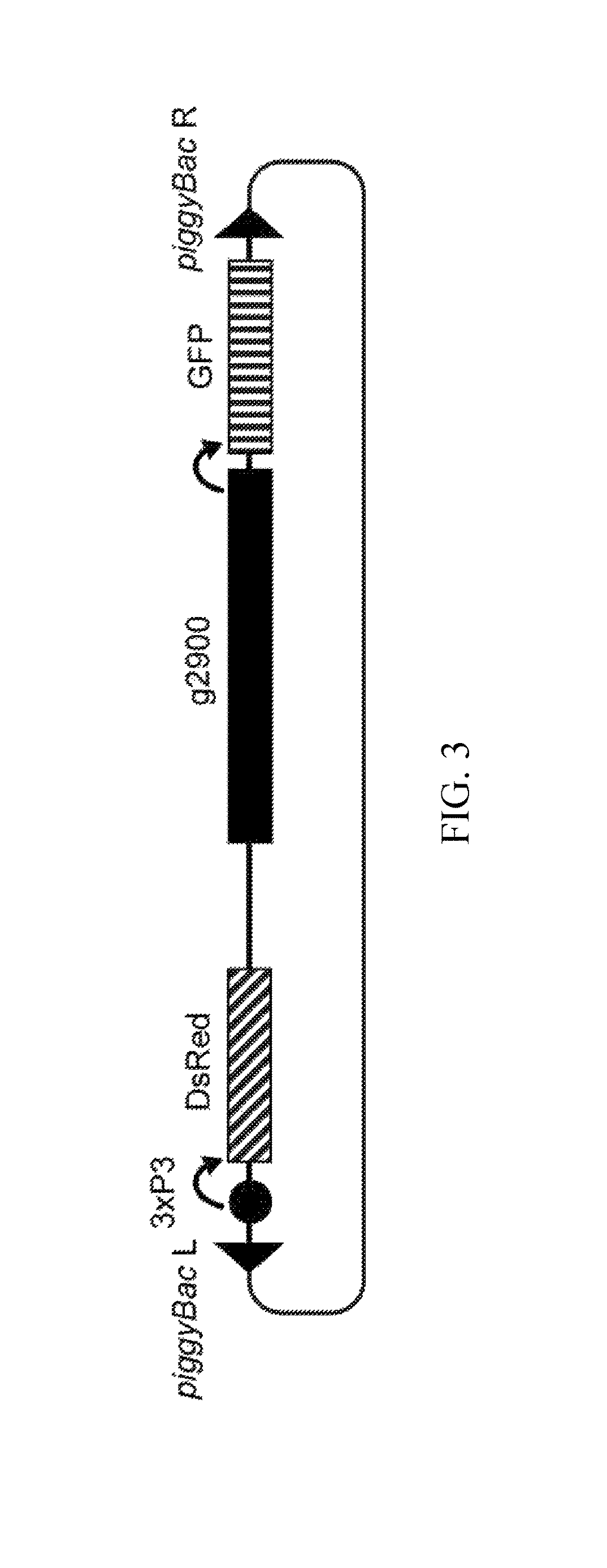Exogenous gene expression vector, transformant discrimination marker, and transformant
a technology of discrimination marker and transformant, applied in the field of exogenous gene expression vector, can solve the problems of host difficulty in mass production, promoter problems, waste of resources, etc., and achieve the effect of low invasiveness, easy identification, and easy identification
- Summary
- Abstract
- Description
- Claims
- Application Information
AI Technical Summary
Benefits of technology
Problems solved by technology
Method used
Image
Examples
example 2
tion of Active Region of Silkworm Hsp90 Gene Promoter
(Objectives)
[0084]The results of Example 1 suggest that g2900 has hsp90 gene promoter activity of silkworm. In this example, accordingly, the minimal active region of the hsp90 gene promoter that can function as a promoter of the exogenous gene expression vector of the present invention was determined on the basis of g2900.
(Method)
(1) Construction of Exogenous Gene Expression Vector
[0085]In order to assay the promoter activity of the g2900 sequence or a partial sequence thereof, an exogenous gene expression vector was constructed by inserting promoter sequences into the upstream of the luciferase gene of the firefly-derived luminescent enzyme protein shown in FIG. 5A.
[0086]The exogenous gene expression vector into which the full-length g2900 sequence had been inserted was constructed by performing PCR with the use of the forward primer (SEQ ID NO: 14) and the reverse primer (SEQ ID NO: 15) and pCR-BluntII-g2900 prepared in Example...
example 3
n of Gene Promoter Activity
(Objectives)
[0095]Activity of the silkworm hsp90 gene promoter for inducing gene expression was compared with that of a conventional gene promoter, which had been often used.
(Method)
(1) Construction and Purification of Exogenous Gene Expression Vector
[0096]Methods of construction and purification of exogenous gene expression vectors were basically in accordance with those described in Example 1. g2900 was used as the hsp90 gene promoter of silkworm. The pGL3 vector (Promega) was used as a negative control. The actin A3 gene promoter (BmA3) often used as a gene promoter for gene recombination of silkworm was used as a control promoter for activity comparison. As the exogenous gene expression vector into which g2900 had been introduced, pGL3-g2900 prepared in Example 2 was used. Meanwhile, the exogenous gene expression vector pGL3-BmA3 into which BmA3 had been introduced was prepared in the manner described below. Firstly, PCR was carried out using the pHA3P...
PUM
| Property | Measurement | Unit |
|---|---|---|
| pH | aaaaa | aaaaa |
| color | aaaaa | aaaaa |
| fluorescent | aaaaa | aaaaa |
Abstract
Description
Claims
Application Information
 Login to view more
Login to view more - R&D Engineer
- R&D Manager
- IP Professional
- Industry Leading Data Capabilities
- Powerful AI technology
- Patent DNA Extraction
Browse by: Latest US Patents, China's latest patents, Technical Efficacy Thesaurus, Application Domain, Technology Topic.
© 2024 PatSnap. All rights reserved.Legal|Privacy policy|Modern Slavery Act Transparency Statement|Sitemap



